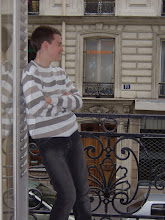

I learned Anseptic technique on Friday (curses for not posting it then; I'd have had a post on 08.08.08!), which is very useful. Apparently it's a major skill.
I'll tell you why; on Friday, I went to see the Microbiologist. We went up to the maintenance area and took water samples - raw water is brought in, softened with calcium, filtered and run under UV light to kill off bacteria. The maintenance system is complex - certain "clean" animal units are ventilated to have positive pressures so any pathogens are blown away from the doors.
Anyway, the taps are swabbed with a 70% ethanol mix and then allowed to run for a bit (in case any water is standing in the pipe - that skews how many bugs show up). The water sample is then taken back, and diluted three fold (this facilitates colony counting). You drop samples with a pasteur pipette - it's a special pipette that drops 1/5th of a millilitre per drop -
onto an agar plate (which sometimes has sheep's blood in it, depending on what you're trying to culture). The plates are incubated and the results are counted up - one colony grows out from each bacterium, so it gives you a vague idea of what's going on. There's almost always bacteria; the engineers allow a "bacteria film" of non pathogenic bacteria to grow inside pipes, as this stops bad bacteria getting a foothold so easily. Of course, some of these bacterias are "oppertunistic", so if the animals get stressed, an outbreak can occur.
What else...On Thursday, I helped take sperm samples from mice for freezing. Male mice have a
 lot more fat, but you pull it aside, and then cut out the vas deferens and the epididmus. The testes are filled with immature sperm, so they're pretty much worthless, but the rest is useful. You sort of have to walk the sperm down the vas deferens, and then incubate them in petri dishes, so the sperm spreads around. You then collect them using a wide tipped pipette (a narrow one beheads them), put them in nitrogen vapour for a while, then pop them in liquid nitrogen.
lot more fat, but you pull it aside, and then cut out the vas deferens and the epididmus. The testes are filled with immature sperm, so they're pretty much worthless, but the rest is useful. You sort of have to walk the sperm down the vas deferens, and then incubate them in petri dishes, so the sperm spreads around. You then collect them using a wide tipped pipette (a narrow one beheads them), put them in nitrogen vapour for a while, then pop them in liquid nitrogen.Oh, and the vials are called "Eppindorfs".


No comments:
Post a Comment